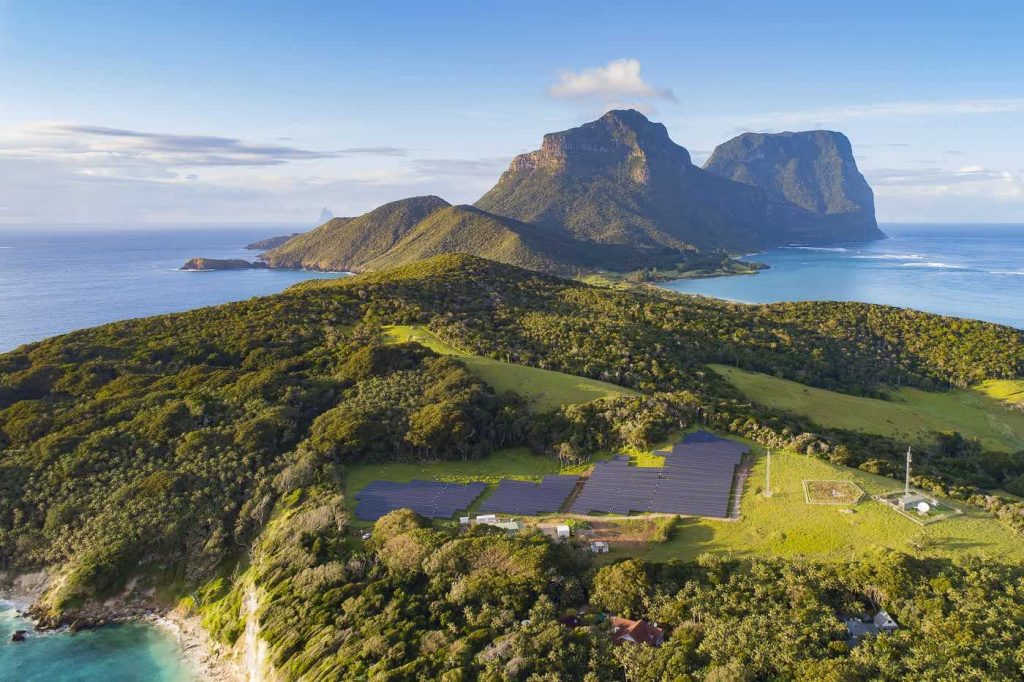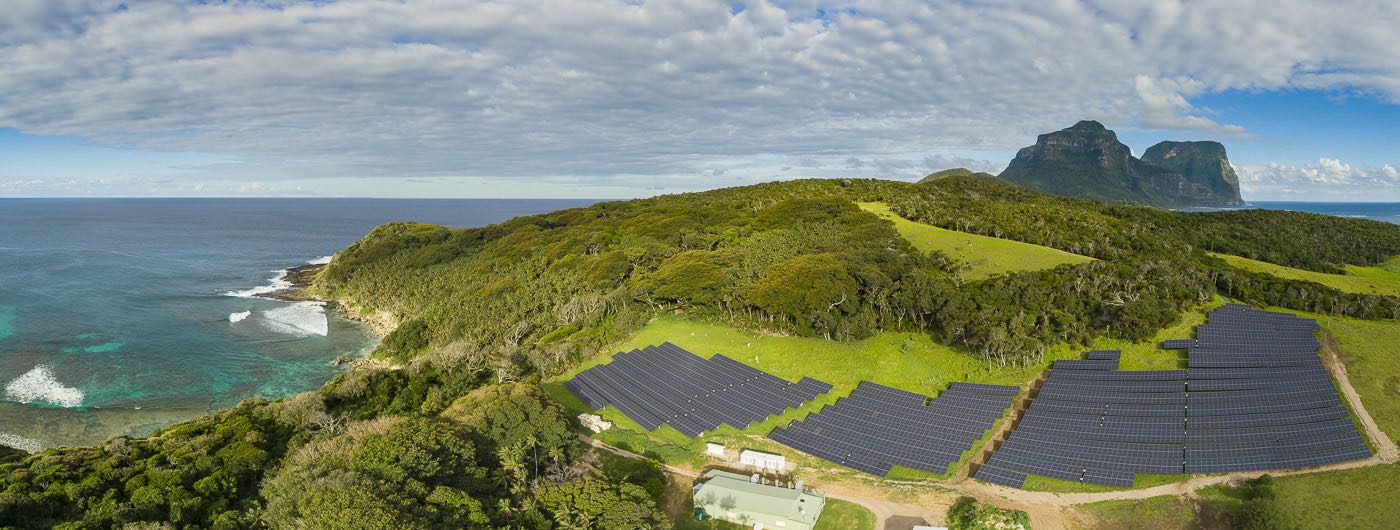Lord Howe Island renewables switch
Lord Howe Island draws thousands of visitors every year to experience plants and animals found nowhere else in the world.

Located more than 600 kilometres north-east of Sydney in the Tasman Sea, Lord Howe Island is an eco tourism mecca.
With pristine beaches, lush rainforests and coral-rich waters, the UNESCO World Heritage Listed island is home to just a few hundred permanent residents, but draws in more than 16,000 visitors every year.
The island’s electricity needs have traditionally been met by diesel generators, powered by fuel shipped in from the mainland every two to three weeks.
But in a boost to the Lord Howe’s sustainable credentials, the board that manages the Lord Howe on behalf of the New South Wales Government embarked on an energy transformation in 2014, planning a hybrid wind, solar and battery system with diesel backup.
ARENA announced support for a revised project in 2019, which has gone on to install a 1.2 MW solar farm and 3.2 MWh of battery storage.
Construction of the solar and battery system began in 2020 and was commissioned earlier this year, with renewable energy now being fed into the island’s existing microgrid.
The hybrid system is expected to save nearly 400,000 litres of diesel every year, providing a boost to the island’s energy independence and environmental conservation.
Blazing a trail
ARENA provided $4.5 million towards the $11.1 million project, with the balance made up through a loan provided by the NSW Government.
The project builds on ARENA’s support for similar hybrid systems to be deployed on King Island and Flinders Island in Bass Strait, which to date have exceeded expectations and achieved extended periods of renewable-only operation.
When the funding for Lord Howe was announced, ARENA CEO Darren Miller said knowledge gained from the project will support other remote and isolated communities to make the switch from diesel to renewable energy.
“Lord Howe Island faces a unique set of challenges in supplying and recovering the costs of providing essential services to its community and in protecting Lord Howe Island’s natural environment,” Mr Miller said.
“We are excited to see a renewable solution will be adopted that will significantly improve the sustainability of the power supply, improve energy security and reduce the impact of future fuel cost increases,” he said.
Announcing the completion of the Lord Howe Island renewables project, NSW Energy Minister Matt Kean said, “The addition of locally generated renewable energy to the grid boosts the already remarkable ecotourism offering provided by the businesses and community of Lord Howe Island.”
Seven years in development
The business plan for the project was first developed in 2014 around a hybrid of wind, solar, battery storage with diesel generators for backup power.
Over time the plan evolved to replace the wind turbine with a larger solar array, with a 2017 feasibility study confirming the revised system would provide the same benefits.

Community support for the project has been strong from the beginning, with a survey finding residents were unanimously in favor of the first iteration of the plan and 90 per cent of visitors saying that installing renewable energy would positively impact their decision to visit again.
The long planning phase required the Lord Howe Island Board to evaluate the project after the scope was revised to ensure their plan would keep up with the latest technology and community expectations.
They found that reconfiguring the solar panels into one lot rather than two would deliver better value, with other small changes made to improve amenity for locals during the construction phase.
Early performance indicates that the hybrid microgrid will reduce diesel consumption by around 70 per cent, but the growth of rooftop solar is also helping to maximise the island’s reliance on renewables.
LIKE THIS STORY? SIGN UP TO OUR NEWSLETTER

ARENA